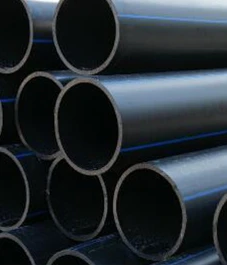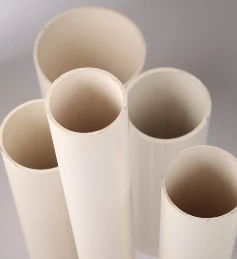May . 11, 2025 07:49 Back to list
Transparent PP Sheets High Clarity, Durable & Versatile Solutions
- Overview of Transparent Plastic Sheets in Industrial Applications
- Key Technical Advantages of PP, PVC, and HDPE Transparent Sheets
- Performance Comparison: Leading Manufacturers and Material Specifications
- Customization Options for Specialized Industry Requirements
- Real-World Applications Across Key Sectors
- Cost-Benefit Analysis and Market Trends
- Future Innovations in Transparent PP Sheet Technology

(transparent pp sheet)
Understanding Transparent PP Sheet Solutions for Modern Industries
Transparent plastic sheets, particularly PP (polypropylene), PVC (polyvinyl chloride), and HDPE (high-density polyethylene), have become indispensable in sectors ranging from packaging to automotive manufacturing. With a global market projected to grow at 5.8% CAGR through 2030 (Grand View Research), these materials combine optical clarity with mechanical resilience. PP transparent sheets dominate 42% of the thermoformed packaging segment due to their balance of flexibility and chemical resistance, while PVC and HDPE variants address specialized needs in construction and chemical storage.
Technical Superiority in Material Engineering
Advanced polymer blends enable transparent PP sheets to achieve 92% light transmission parity with glass while maintaining a tensile strength of 35 MPa. PVC transparent sheets outperform in flame retardancy (UL94 V-0 rating) and weather resistance, making them ideal for outdoor signage. HDPE transparent sheets provide exceptional impact resistance (18 kJ/m² Charpy test) for safety-critical applications. All variants now incorporate UV-stabilized formulations, extending outdoor service life to 15+ years without yellowing.
Manufacturer Benchmarking Analysis
| Parameter | PP Sheet | PVC Sheet | HDPE Sheet |
|---|---|---|---|
| Thickness Range (mm) | 0.5-15 | 0.3-20 | 1-25 |
| Light Transmission (%) | 88-92 | 85-90 | 82-87 |
| Thermal Resistance (°C) | -10 to 120 | -20 to 70 | -50 to 100 |
| Recycling Code | 5 | 3 | 2 |
| Price/Sheet (1m²) | $18-25 | $15-22 | $20-28 |
Tailored Solutions for Sector-Specific Demands
Modern fabrication technologies enable precision customization:
• Thickness Gradients: Multi-layer PP sheets (0.2mm-3mm transitions) for medical device packaging
• Anti-Fog Coatings: HDPE sheets with permanent hydrophilic surface treatments (contact angle <10°)
• Conductive Variants: Static-dissipative PVC sheets (10⁶-10⁹ Ω/sq) for electronics manufacturing
CNC routing and laser cutting capabilities maintain ±0.1mm dimensional accuracy across batch productions.
Cross-Industry Implementation Case Studies
Automotive: Toyota's 2023 model headlight covers use 2.5mm PP transparent sheets with 89% light transmission and 3H pencil hardness.
Medical: Sterilization-compatible PVC trays withstand 1,000+ autoclave cycles (134°C/2.2 bar) without deformation.
Food Packaging: HDPE-based modified atmosphere packaging extends produce shelf life by 40% through optimized O₂/CO₂ permeability (25,000 cm³/m²/day).
Economic Viability and Supply Chain Factors
Bulk procurement (500+ sheets) reduces PP sheet costs by 18-22% compared to small batches. Regional price variations show Asian-manufactured sheets costing 15% less but with 25% longer lead times versus North American suppliers. Environmental regulations drive demand for 100% recyclable PP grades, with post-industrial recycled content now reaching 40% without compromising clarity.
Advancements in Transparent PP Sheet Production
Emerging nano-coating technologies enhance PP sheet scratch resistance by 300% (ASTM D1044 testing). Bi-axial orientation processes improve tensile strength to 45 MPa while maintaining 91% transparency. Industry 4.0 integration enables real-time thickness monitoring (±0.02mm) during extrusion, reducing material waste by 12%. These innovations position transparent PP sheets to capture 58% of the clear polymer market by 2028 (Smithers Report).

(transparent pp sheet)
FAQS on transparent pp sheet
Q: What are the common uses of transparent PP sheets?
A: Transparent PP sheets are widely used in packaging, folders, and protective covers due to their clarity and flexibility. They also serve as durable materials for food containers and medical packaging. Their chemical resistance makes them ideal for industrial applications.
Q: How does a PP transparent sheet differ from a PVC transparent sheet?
A: PP transparent sheets are polypropylene-based, offering better chemical resistance and recyclability. PVC transparent sheets, made from polyvinyl chloride, provide higher rigidity and flame retardancy. PP is also more environmentally friendly compared to PVC.
Q: Can HDPE transparent sheets be used for outdoor applications?
A: Yes, HDPE transparent sheets excel in outdoor use due to their UV resistance and moisture-proof properties. They are commonly used for greenhouse panels, outdoor signage, and protective barriers. Their high impact strength ensures long-term durability.
Q: Are PVC transparent sheets safe for food packaging?
A: PVC transparent sheets can be food-safe if labeled as USP Class VI or FDA-compliant. However, PP sheets are often preferred for food contact due to their non-toxic nature. Always verify material certifications before use in food-related applications.
Q: Which is more cost-effective: PP or HDPE transparent sheets?
A: PP transparent sheets are generally more affordable for short-term or disposable applications. HDPE sheets may have a higher upfront cost but offer better longevity in harsh environments. The choice depends on specific project requirements and budget.
-
HDPE Natural Sheet: Durable, Food-Grade & Versatile Plastic Solutions
NewsAug.27,2025
-
Durable Glossy PVC Rigid Sheet | Premium High-Shine Panels
NewsAug.26,2025
-
Durable PP Rigid Sheet: Lightweight, Chemical Resistant Solutions
NewsAug.21,2025
-
PVC Grey Sheet for Extraction: Chemical Resistant & Durable
NewsAug.19,2025
-
Durable PVC Pipe Fittings for Plumbing & Irrigation Needs
NewsAug.18,2025
-
HDPE Steel Belt Reinforced Spiral Corrugated Pipe | High Strength
NewsAug.17,2025

